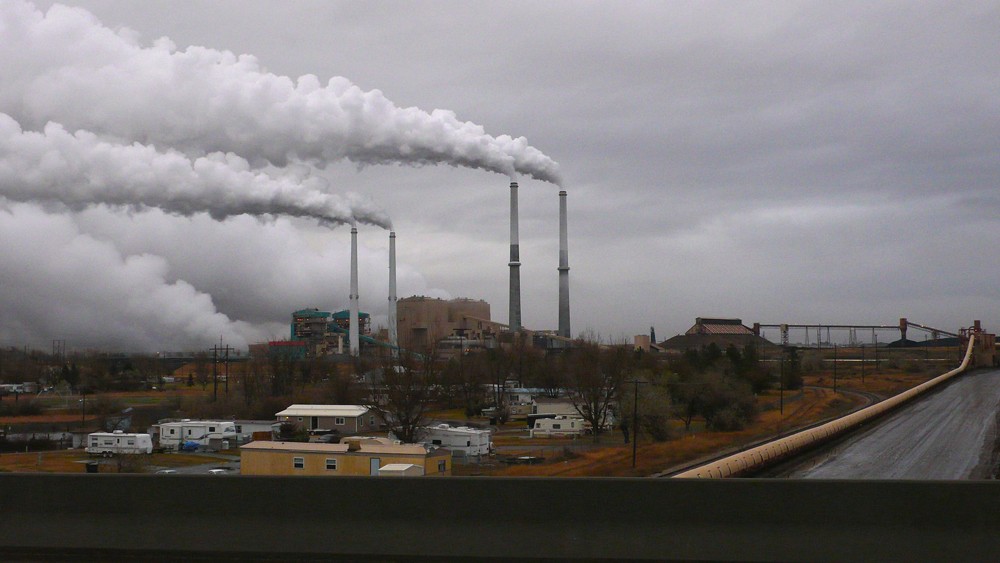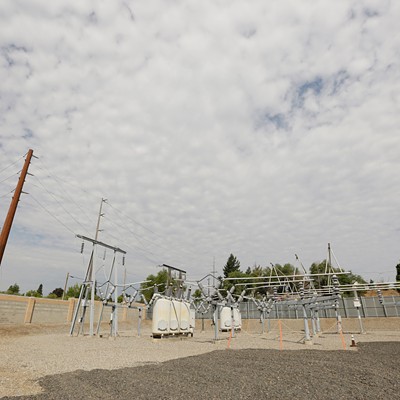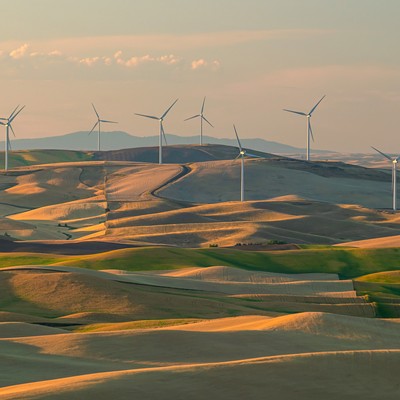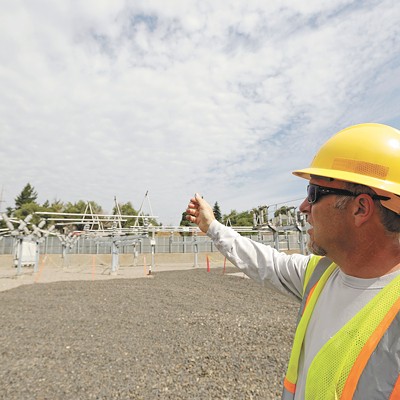
Tom Eckman stood in a conference room in the Red Lion River Inn last week showing about 30 people a series a graphs, all with steep curves that made one important point: The energy needs of Washington, Oregon, Idaho and Montana could be met for the next 20 years through conservation and better managing demand.
As Eckman continued his wonkish talk, the crowd, there for a hearing on the region's future energy needs, wore confused expressions as he pointed to two smaller lines on the graph representing solar and wind energy and their limited use.
"So we didn't find those to be very useful in meeting winter capacity because the sun doesn't shine very much here in the winter, and the wind doesn't blow when it's really, really cold, so those are both problematic resources," continued Eckman, the director of the Power Division for the Northwest Power and Conservation Council, a four-state panel formed by Congress to plan for the region's energy demands.
Eckman had another set of graphs about another problematic source of energy: coal. These graphs pointed to how the region could meet U.S. Environmental Protection Agency regulations to reduce carbon emissions and pollutants by replacing coal plants with natural gas.
The four-state region, like much of the country, is moving away from coal, a source of energy that has come under increased scrutiny for polluting the air and contributing to climate change.
Avista, an investor-owned utility that provides electricity for nearly 340,000 customers in Idaho and Washington, recently filed a separate plan with regulators indicating that energy generated from Colstrip, a coal-powered plant located in southeastern Montana, will remain a part of its energy portfolio for the next 20 years. Critics say that the plant is likely to become more expensive under new regulations and the cost will be borne by ratepayers and shareholders.
"Avista now becomes an outlier, saying they are going to be keeping this dirty coal plant for another 20 years," says Doug Howell, senior campaign representative for the Sierra Club.
But Avista says its analysis shows that the plant will likely remain economical to operate for another 20 years, and will provide ratepayers a steady source of energy when natural gas prices fluctuate and less hydropower is available when rivers run low (as they have been during the historic drought). Jason Thackston, Avista senior vice president of energy resources, says that renewables, such as wind and solar, have a long way to go before they are viable.
In 1980, Congress passed legislation authorizing Idaho, Montana, Oregon and Washington to develop a plan for the region's energy needs. Currently, the Northwest Power and Conservation Council, the panel that oversees these efforts, is finalizing a five-year update to its regional energy plan. One of its key conclusions is that the region's growing energy needs can be met through 2035 by developing 4,500 megawatts of energy efficiency, including home weatherization, more efficient appliances, building codes and other measures, says John Harrison, spokesman for the council.
Another takeaway from the plan is that carbon emissions will drop from 55 million metric tons to 34 million metric tons as coal-burning plants in Centralia, Washington; Boardman, Oregon; and Valmy, Nevada, close between 2020 and 2026.
Nationally, coal-burning plants are being taken off line as natural gas (considered to be a cleaner form of energy) becomes cheaper. New federal regulations requiring reductions in mercury, acid gases and toxic metals emissions from power plants also are making coal less attractive, according to an analysis from the U.S. Energy Information Administration. The analysis forecasts that 60 gigawatts of energy (enough to power tens of millions of homes) produced from coal will be taken off line by 2020. But Colstrip, owned by a consortium including Puget Sound Energy, Talen Energy and Avista, is different, says Harrison.
"The cost of running Colstrip is so low that the utilities have decided to keep running it until they can't," he says.
"I think it's important to understand what drove the decision to drive down Boardman and Centralia," says Avista's Thackston. "What was really driving that was pure economics. Those are older generating facilities."
Those facilities, he says, would have required prohibitively expensive upgrades to meet new environmental regulations. Colstrip, he says, is a newer facility and won't require any upgrades for another 20 years. Avista has a 15 percent ownership in two of Colstrip's four generation units, which are adjacent to the Rosebud Mine, and Thackston says it'll continue to be a reliable source of energy.
Public utilities, such as the Bonneville Power Administration, have to adhere to the Northwest Power and Conservation Council's energy plan, says Harrison. But for investor-owned utilities, such as Avista, the plan is purely advisory. Recently, Avista submitted a two-year plan (called an Integrated Resource Plan or IRP) to regulators in Washington and Idaho outlining the capacity for its energy portfolio, 9 percent of which will come from coal.
But the Sierra Club's Howell says that Avista's actual use of coal tends to be much higher than what's been presented in its IRP. He also says that new environmental regulations could cost hundreds of millions of dollars more than Avista anticipates.
"What they like to show people is what the total capacity of their resources are, because it makes them look clean," says Howell, who points to reports Avista files annually with the state Department of Commerce detailing their sources of energy.
Avista's IRP, a dense 212-page document, projects the utility's carbon emissions to climb to 3 million metric tons by 2035. The document expects Colstrip to remain open until 2026, largely unhindered by environmental regulations. Although it notes that the facility may have to make some potentially high-cost upgrades, such as installing new sulfur dioxide scrubbers, to comply with environmental regulations, the document concludes that "Avista does not believe this scenario represents a likely future for Colstrip."
Thackston says some of these regulations were just recently introduced, and it's not clear how they will be implemented. For now, he says, Colstrip is in compliance with existing regulations. Coal is Avista's second-cheapest form of energy, after hydroelectricity, and the utility says it keeps costs down for consumers.
"When we are putting a plan together, we have to do it on proven technology and the economics we see today," says Thackston.
Currently, two Washington state groups are working on competing ballot measures for 2016 that would impose a tax on carbon emissions. One of these proposals, from a group called Carbon Washington, would tax out-of-state emissions from companies like Avista. But the company's IRP states that under its analysis, the plant would only remain "marginally uneconomic" under both the increased regulations and new carbon taxes.
Robert Mcilvaine, president of the energy consulting firm the Mcilvaine Company, says that coal, for all its downsides, isn't going away anytime soon, and there are technologies being implemented that will result in less pollution. Avista's plan to get only 9 percent of its energy from coal, he says, would barely protect it from fluctuations in the rest of its portfolio, and most utility companies get at least 20 to 40 percent of their electricity from coal.
"It'll be many decades," he says, "before we can count on wind and solar to be major sources of energy." ♦






















